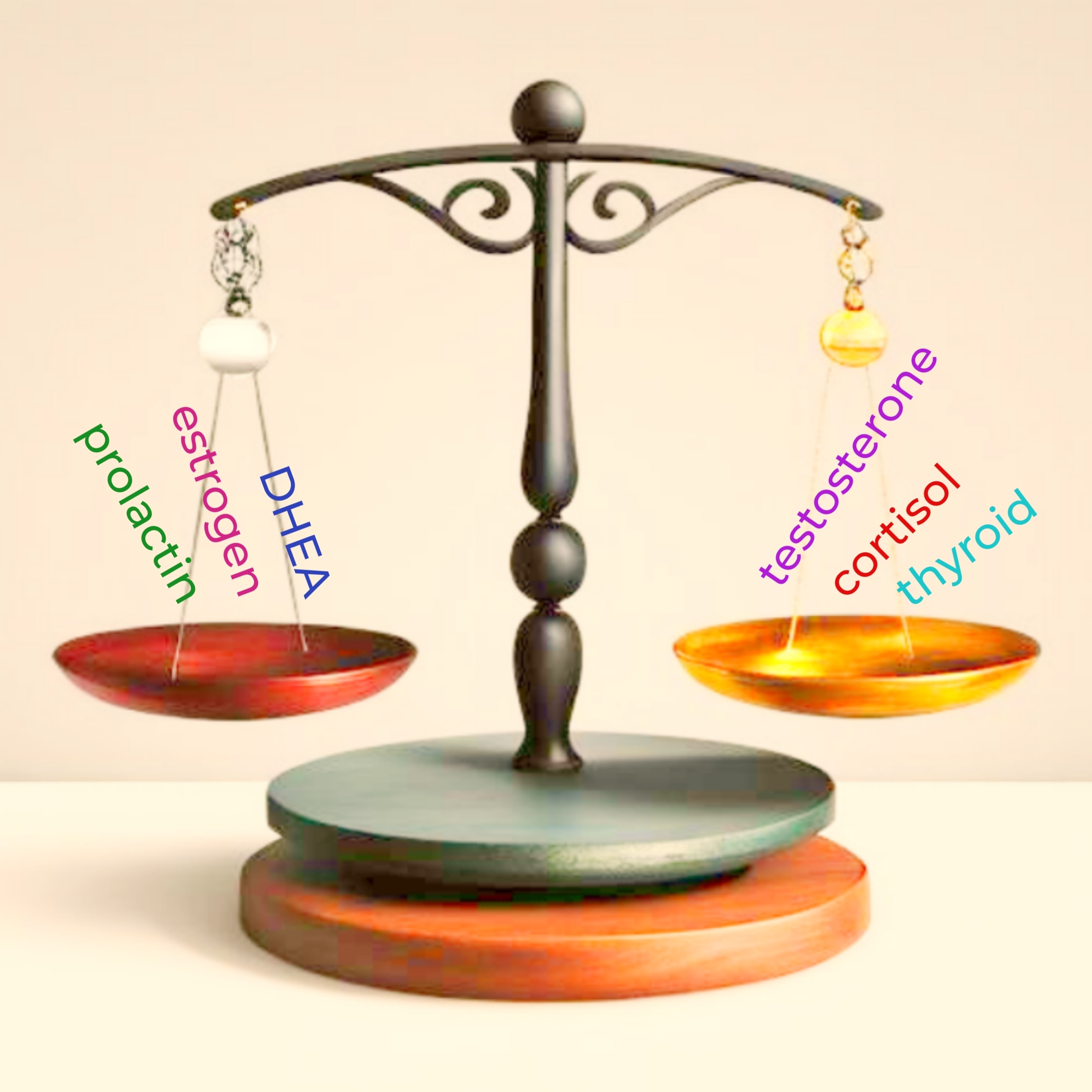Long touted as the hormone of pregnancy, the neurosteroid progesterone has a calming effect for both women and men. This article examines progesterone production in males and females through the different stages of life.
The cycling female
To understand progesterone production, we need to explore the relationship that estrogen has with progesterone. In a cycling woman, estrogen is released from the ovary and progressively increases over the first fourteen days of the menstrual cycle. This increase causes the endometrium, or inner uterine lining, to grow. At ovulation when estrogen is at its highest level, it stimulates the release of an egg from the ovary as well as the production of progesterone. From day 15 to day 30 of the menstrual cycle, the ovary also produces progesterone in a progressive increase causing stabilization of the endometrium, readying itself for the implantation of a fertilized egg. If implantation does not occur, estrogen and progesterone decline and the shedding of the endometrium triggers menstruation.
If a cycling female takes birth control, estrogen and progesterone are maintained at a low level for three to four weeks, depending on the type of birth control. This in turn reduces the endometrial lining thickness due to the lack of elevations of either estrogen or progesterone.
Menopausal women
Around age 52, the menopausal woman mimics a female on birth control with even lower amounts of estrogen and progesterone. The ovaries reduce estrogen production which in turn negates egg release and endometrial growth. The lack of estrogen at ovulation, or mid cycle, does not stimulate the production of progesterone. Therefore, there is a lack of both progesterone and estrogen. Common symptoms of such reduction of these hormones are night sweats, irritability, depression, insomnia, gastrointestinal symptoms, joint pain, muscle fatigue and centralized obesity to name a few.
Men
On average, between the ages of 40-55 men begin to have notable shifts in their hormones. The testes secrete testosterone with a very slow decline from age 25 while progesterone begins to decline between ages 50-55. As progesterone declines in men, an enzyme known as aromatase increases its activity causing testosterone to convert into estrogen. Ultimately, there is an increase in estrogen and decrease in both progesterone and testosterone. This tends to cause symptoms such as poor libido, centralized obesity, anxiety, depression and erectile dysfunction to name but a few.
Progesterone as a neurosteroid
As progesterone is produced from cells in the female ovaries, male testes and adrenal glands in both, it gets broken down by enzymes. A by-product of this process is called allopregnanolone. Allopregnanolone has the ability to cross the blood brain barrier and attach to receptors in the brain called GABA receptors. This attachment results in a calming effect.
Your answer to low progesterone
If you are over the age of 45 and begin to experience some of the symptoms discussed above, it would be prudent to investigate further. To assess a hormone imbalance often involves looking at several hormones. Examining the balance between estrogen, testosterone, prolactin, thyroid, cortisol and DHEA can provide guidance for effective treatment.
If your progesterone level is low, there are various methods of replacement including creams and oral tablets. Since progesterone is calming, it is often prescribed at night. Common side effects of progesterone replacement therapy can be headaches and irritability.
While some herbal remedies boast of progesterone-like effects, the neurosteroid benefit has only been achieved by progesterone replacement.
Dr. Stacey Guggino, ND, LAc, graduated from the National College of Natural Medicine in Portland, Oregon with a Doctorate in Naturopathy and a Master’s degree in Oriental Medicine. For the past 12 years, she has specialized in treating pain and sports injuries with acupuncture and prolotherapy. Dr. Guggino has also studied and practiced aesthetic medicine for 11 years.



